Ford wasn’t too far from the mark when it called the Capri “The car you always promised yourself”. Affordable, offered with a wide range of engines, great to look at, and not so bad to drive, it could lay a pretty good claim to being all things to all people.
Well, nearly. Because if you lived out in the sticks, or simply wanted to get around without fishtailing everywhere each time it rained, then one model might have been ideal – a four-wheel drive Capri – if only Ford had ever put it into production.

The idea for an all-wheel drive Capri – or 4×4, as the technology used to be called in the old days – has its genesis in farmyard 4×4 vehicles. So it’s no wonder that this prototype AWD Capri is at home tearing across the rutted mud surrounding the fields of Ford’s Boreham facility in Essex, where the Competitions Department was based in the Seventies and for several decades later.
You’ve probably heard of Harry Ferguson. Born into a farming family, he made his fame and fortune thanks to a fascination with machines. After becoming the first Irishman to make and fly an aircraft he moved on to setting up the successful Ferguson tractor company with two partners, one of them being David Brown, later of Aston DB fame.
Ferguson’s tractors used a novel linkage that made them stable, and he later set off on a lifelong quest to add stability to road cars too. He set up Harry Ferguson Research (HFR) as a way to add AWD technology to passenger cars, along with a later offshoot called FF that took over selling the Ferguson Formula technology – and lent its name to the four-wheel drive Jensen FF of 1966.
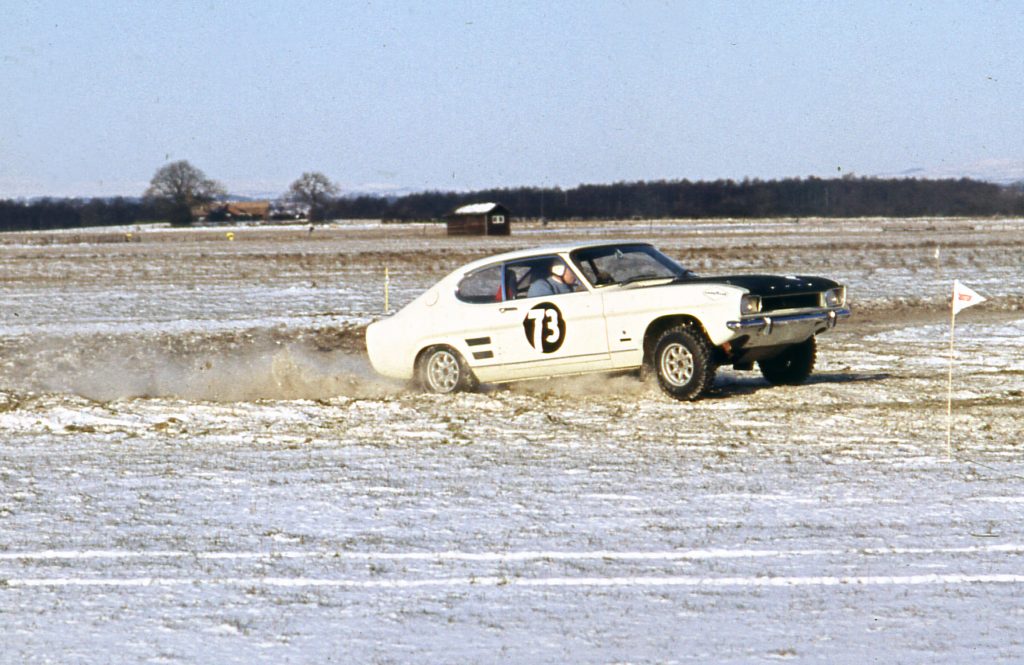
Their idea centred around two advanced features, four-wheel drive and anti-lock brakes. Both are commonplace today, but in the 1960s four-wheel drive was the preserve of off-roaders with little more refinement than the farm machinery they were often parked alongside, while the first fully automatic antilock brakes appeared not on a car, but on the Concorde supersonic aircraft in the late ’60s.
It was at this time that the British Ministry of Technology thought the idea of anti-lock brakes and AWD had a future beyond aircraft and farm machinery. Their job was to keep the British motor industry at the cutting edge (in retrospect, things didn’t quite go to plan there, did they?), and sponsored the Home Office Police Scientific Development Branch to evaluate 22 police-spec Ford Zodiacs converted by HFR to AWD in 1968.
Police drivers preferred the large Ford’s automatic transmission and the Essex 3.0-litre V6 so that’s what Ferguson’s team fitted, along with exotic-for-the time Dunlop Maxaret anti-lock brakes. The Zodiac police cars were delivered in the months before the Capri was launched in January ’69 – just before Concorde flew for the first time.
At this time the Capri was inching towards production, so prototypes of the British-designed equivalent of the Mustang were available to Ford’s Competitions Department, led by Henry Taylor, who had two Capri 1600GTs sent to the technicians at HFR. They ripped out both prototypes’ four-cylinder engines and stuffed in the Zodiac’s V6, complete with auto transmissions and Ferguson Formula’s AWD, as fitted to the 22 police test cars.
The pair of road cars were returned to Boreham, where the Ford engineers promptly fitted race-spec Weslake heads to deliver 160bhp in January ’69, just days after the production Capri was announced. Rally hero and Ford works driver Roger Clark raced the car at Croft where – against all odds – he won all three races. The first Capri racer was joined by another two, possibly three, AWD Capri test mules.
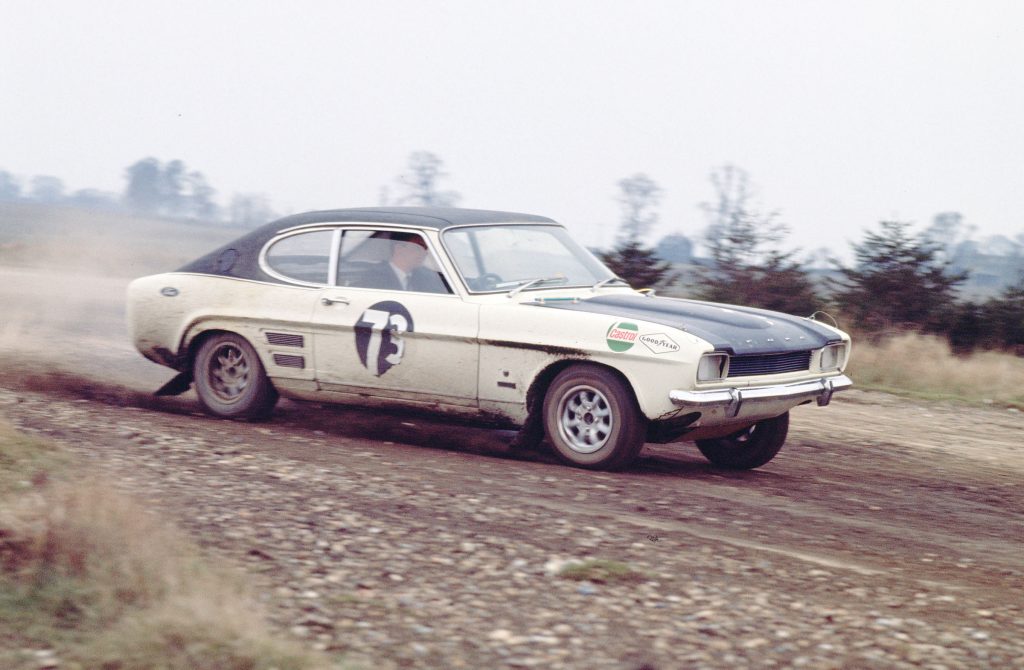
All was looking good for the AWD Capri in 1969, but just a year later the tide had turned. Roger Clark’s car, alongside another campaigned by his brother Stan, and another by Rod Chapman, was upgraded with aluminium cylinder heads and fuel injection to deliver 252bhp, transmitted through a five-speed gearbox.
But in the subsequent ’70–71 season the four-wheel driven Capris failed to deliver on the early promise shown by Roger’s car in that first televised race. Clark hated the car’s heaviness and began to complain that he needed to spend more time in mainstream rallying with an Escort, rather than the made-for-TV spectacle of rallycross, which was conducted on closed circuits rather than in open forests.
Clark may not have been a fan, but Ford’s Advanced Vehicle Operations (AVO) group – which handled series production of specialty Ford road cars with a competition bent – clearly wasn’t deterred. It started getting serious about the idea of an all-wheel drive Capri, even installing AWD rolling road testing equipment after another three road-going FF Capris were made. Despite the weight of all the Ferguson Formula AWD mechanicals and the lacklustre 128bhp of the Essex V6 engine, the cars were demonstrated to the press, who loved them.
But things were shifting on the competitions front just as the roadgoing AWD Capri began to get traction. AVO was developing the mighty RS2600 for circuit racing alongside the all-wheel drive cars, and it would race in a far greater and more glamorous arena. Hurtling around Spa and the daunting Nürburgring in Europe was undoubtedly more in keeping with the Capri’s target aspirations than to be seen plugging around in British mud. And because Ford could sell every RWD coupé it could make, the AWD Capri was becoming redundant to Ford’s marketing and competition needs in Europe.
That didn’t stop an enterprising New York dentist that was rallying his Capri to think that all it needed was all-wheel drive to be a winner stateside. He struck a deal with Ferguson Formula to build 15 AWD Capris, several of which survive to this day. The idea of the AWD Capri – or at least the technology behind four-wheel-drive road cars – was also of interest to BP which had one converted for it to test how fuel consumption was affected by four driven wheels.
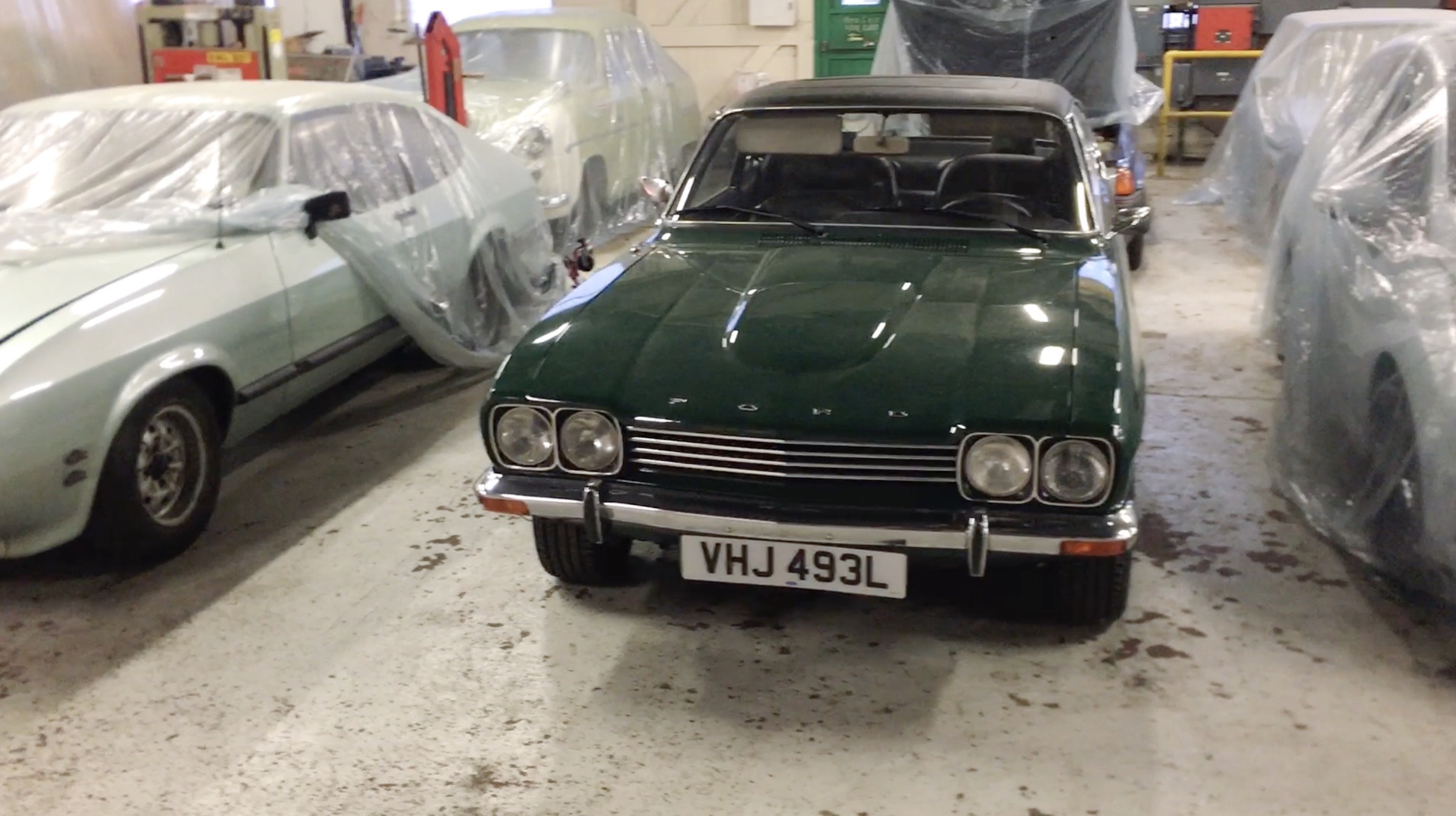
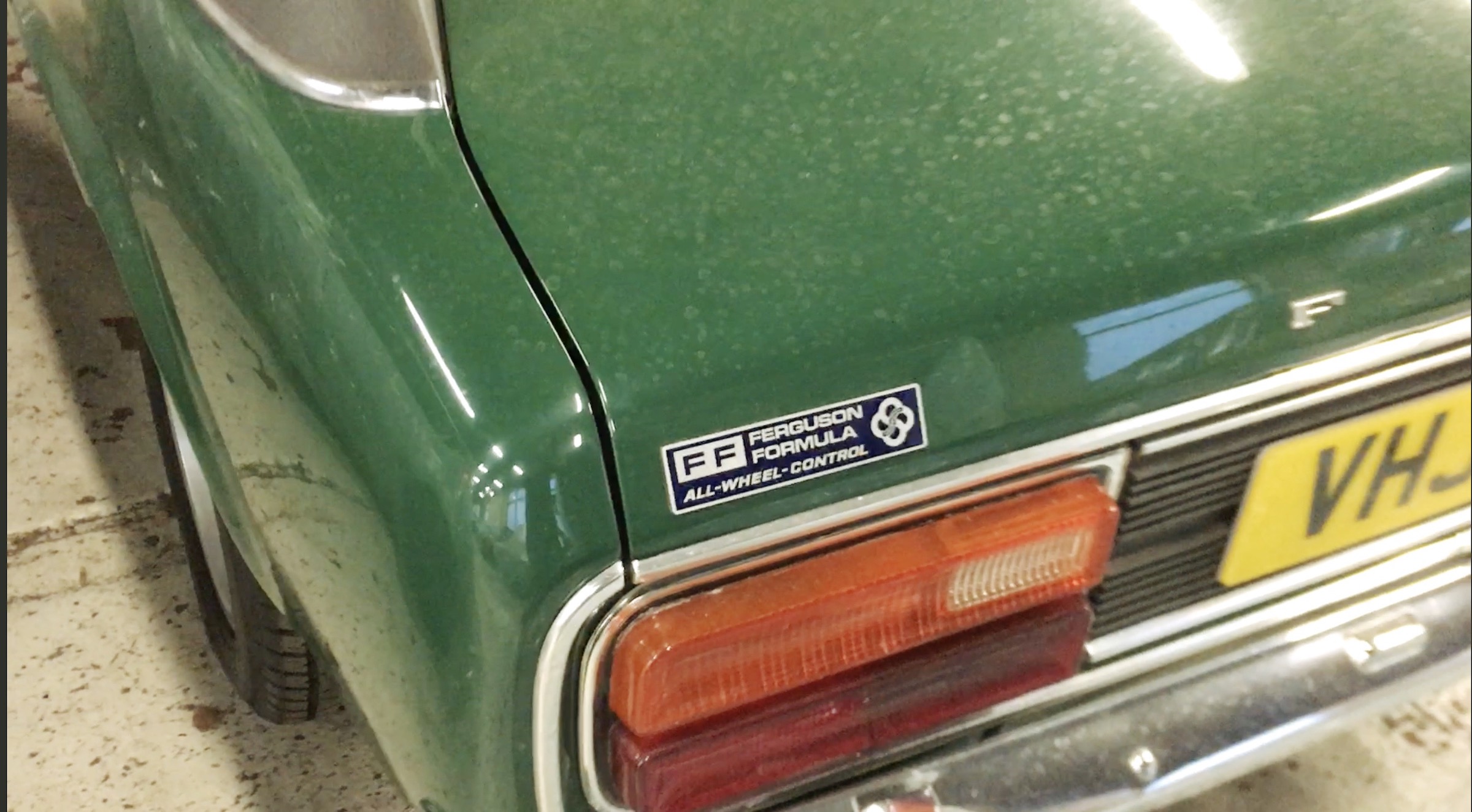
There was enthusiasm outside Ford for the AWD Capri amongst the press, plus fuel companies that could see AWD road cars had a future and even a far-sighted dentist in Manhattan. So what happened, and why did enthusiasts have to wait another ten years before they could buy fast Ford with four driven wheels, the Sierra XR4x4?
Rod Mansfield, the legendary engineer behind both cars – and so many of the iconic high-performance and iconic Fords – recalls the issue. “The AWD kit was really a tight fit in the small Capri and making a production version would have been far too disruptive for the factory,” he says.
“We could justify special lightweight RS2600s because they could be made in batches and then the later regular versions came down the line because the RS2600 wasn’t difficult for the factory to handle. But the AWD installation would have required so much off-line reworking that it would have been impractical to make in any volume.”
The RS2600 and RS3100 were simply better as RS road cars and even better for building the overall reputation of the rear-drive Capri. Like so many good ideas the AWD was (almost) the right car, but at the wrong time. The Sierra XR4x4 five-door would use the same basic mechanical layout developed by Ferguson Formula technology, but it was a larger car that was able to package all the extra bits, like the bulky transfer case that sent drive to the front wheels, without encroaching on cabin space as much as it would have done in the compact Capri cabin.
That didn’t stop Capri enthusiasts though, and one more car was converted in the 1980s using the later Mark III body shell. The Capri was at its best as a V6-powered, long-distance cruiser, and would have been a terrific combination with AWD. Ford’s coupé came close, but never close enough, to production with AWD. The technology would feature in many of the iconic RS cars that followed – but not in a Capri.
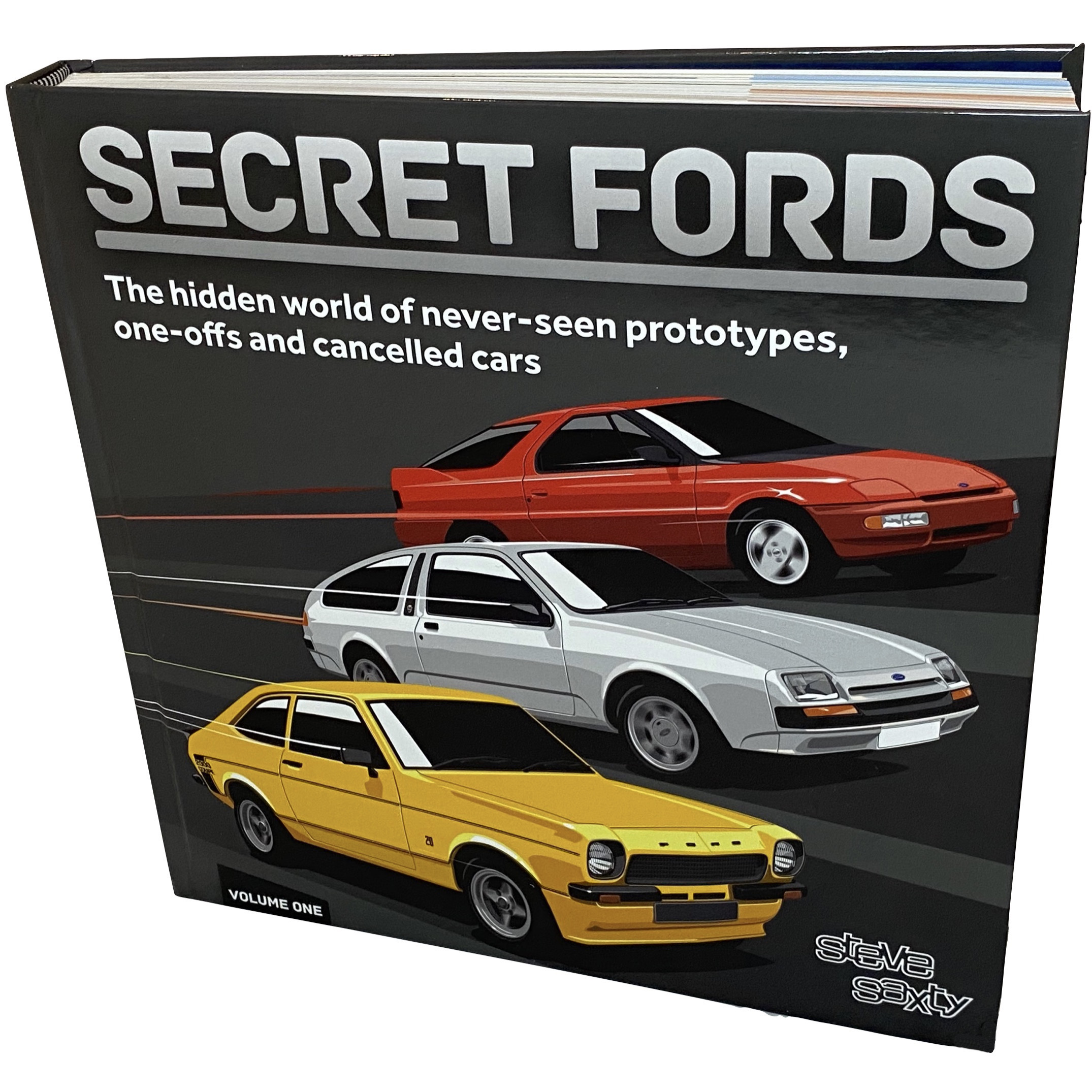
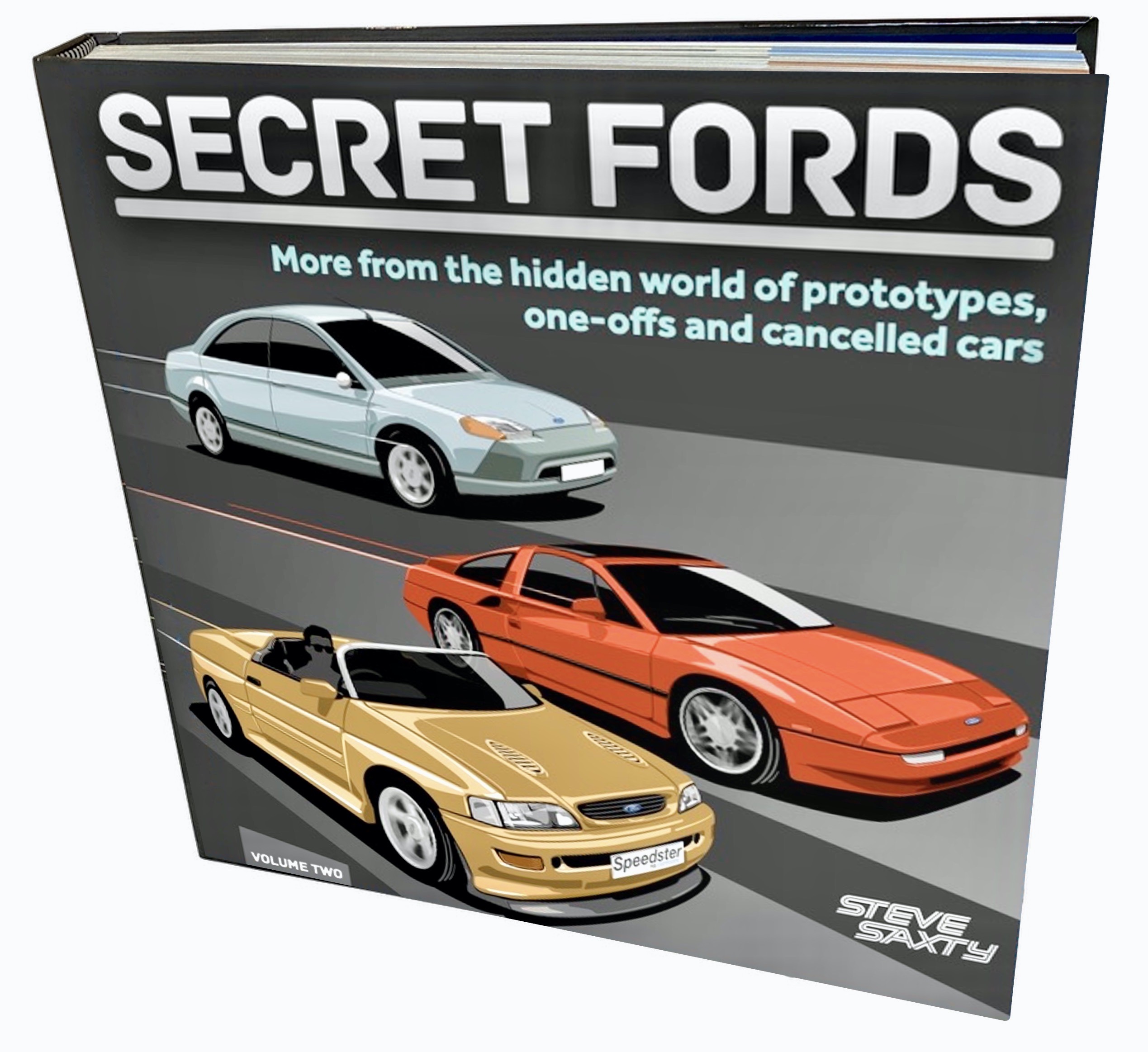
You can get a Hagerty-exclusive discount of 20% off each of the two volumes of Steve Saxty’s Secret Fords books at www.stevesaxty.com. Use the coupon code HAGERTY20 at checkout.
Read more
Buying Guide: Ford Capri (1968–1986)
Dagenham dreams: Ford’s blue oval shines bright
The fastest Ford the world never saw







My Dad came home one evening and said
“I’ve just been driving a 4wd Capri round a field – such fun!”
He worked for Hardy Spicer
One of the lucky few outside of Ford to have driven it, in that case.
In 1972 we had an AWD Capri on trial at 4 Area Traffic police at Ashford, Kent for a couple of weeks. I got to take it out for a 8 hour shift. It was an automatic but went very well and handled a bit like an oversize Mini. It stopped well too. I remember picking up my Sergeant late in the shift and, following an overtake on Hythe hill, for the first time that day (for I rarely drove autos) went for the clutch to downshift before a sharp right hander. Red face and apologies as the car nearly stood on its nose. Memorable day though.
Great recollections. History could of been different.
I bet those Zodiacs would have been good too ?
In 1988 I was visiting friends in Vermont USA and saw a 4×4 Mercury Capri advertised in Hemmings Motor News.
This was in the days when Hemmings was like the old fashioned telephone book.
The car happened to be within about 10 miles of the Hemmings offices at Bennington and I arranged to see it.
I seem to remember that the man said he had collected it from Ferguson in Coventry.
It was badged Mercury as were all the American Ford Capris.
The engine was not a 3 litre but possibly a 2.3 or 2.6 German spec. With Automatic Transmission.
It was a standard looking road car finished in Saluki Bronze which merged well with the rust after years of use in Vermont winters. It drove well but needed full body restoration.
Not really realising it’s rarity I made an offer of less than half of the asking price and was turned down!
The seller showed me his car collection which included a Facel Vega and a 1903 Baker Electric. At the edge of his property he had two Douglas. C47 (DC3) Aircraft at the end of his private runway. A memorable day but unfortunately I had left my camera at my friend’s place!
Quite soon after I bought a new Sierra 2.9 4×4 and enjoyed it very much!
I can remember back in the ’70s seeing a four wheel drive Capri competing in rallycross from Lydden Hill on World of Sport, maybe it was a home made job, but it was great to watch it in action.
I’m not an expert, but believe Maxarat was developed in the 1950s. Certainly the Vulcan and Valiant bombers were fitted with system and both of those were in service in the late 50s /early 60s. Concorde was the first to use carbon disk brakes, which is a different technology altogether. Sorry to be pedantic…
And don’t forget the other Ferguson car.I watched Stirling Moss win rhe Gold Cup at Oulton Park driving a Furguson in the 60s which I photographed and Stirling signed for me in later years.
When I was a teenager, my Dad came home one evening and told me he’d spent the afternoon driving round a field in a 4WD Capri….basically that was the last I ever heard him talk of it.
Dad worked for Hardy Spicer and would often entertain us with the cars he brought home from work….mostly test beds for an overdrive or some transmission innovation. I remember one time after the Motor show he turned up with a Jensen FF…..I was fascinated by this concept of 4WD….. so when he told me they had put it on a Capri, I was hope upon hope it would go into production.
In a way the fact it didn’t was symptomatic of the gradual decline of the British motor industry.
It was left to Audi to take up the concept and make it viable.
A couple of years be
I worked at Hardy Spicer from 1968 – 1972 I worked for a Mr George Kelsall and also in the Sales Department, I also own a Mk1 Ford Capri which I have had for the last 40 years.
I worked at GKN Laycock Engineering in Sheffield from 1966 to 1974. GKN had assigned the job of building a workshop to modify Ford Capris to 4WD on a production line system. Although only a student apprentice at the time, I was given the job of designing the storage of interiors, which had to be removed to enable the tunnel to be cut out so as to fit a larger item. I also arranged for the ‘after modification’ washing bay. During all this I had to find time to design different plates for the central differential viscous coupling. This to experiment with: circular holes, slotted holes and grooves to ascertain the different percentage of torque which could be sent to each end. To my knowledge the whole thing was killed off by GKN because Ford wanted us to buy fully finished cars, modify them and then it was our responsibility to sell them through their dealers. After Graduation, I was given the responsibility of establishing an Overdrive Re-Furbishment Dept. in the 4WD workshop. At the back of the shop were all of the 4WD components: centre transfer boxes, front and rear prop shafts, front differentials, drive shafts, central tunnels, modified sumps, modified front struts, etc.. Probably 10 sets in all. I left Laycocks about this time to join a company where I could be a Design Engineer. No way I wanted to be production manager no matter at what level! I found out later that all of the 4WD stuff had been thrown in scrap bins! Had I not been honest I could have taken any of the components and no one would have known as only I knew what was there. I visited GKN in Birmingham where they were modifying a Reliant Scimitar to 4WD. Due to the fibre glass body I don’t believe they managed it. I understand that some Triumph Stags were converted. Capri, Scimitar or Stag with 4WD were never going to be world beaters. We had a 2.0L VOLVO 142, which was an outstanding car. I drove it often testing overdrives and it handled and cornered much better than the Capri overdrive test car. They should have put 4WD on the VOLVO it would have been a world beater before AUDI developed ‘Quattro’. Without doubt the Quattro system is a phenomenal piece of Engineering. It is so simple and so light compared with the Ferguson FF system. I have an AUDI 90 20V Quattro which also has an outstanding normally aspirated motor.
Great article! We are the owners of the featured British racing great. The car will be moved to a public museum. I’ll let you know when on Facebook. I am very surprised to hear that many survived. Ours is the only road going one left with a huge history. Perfect working order non restored and something like 70k on it. There is a racing one in the states. And one just finished in the UK (not sure if all parts are original).